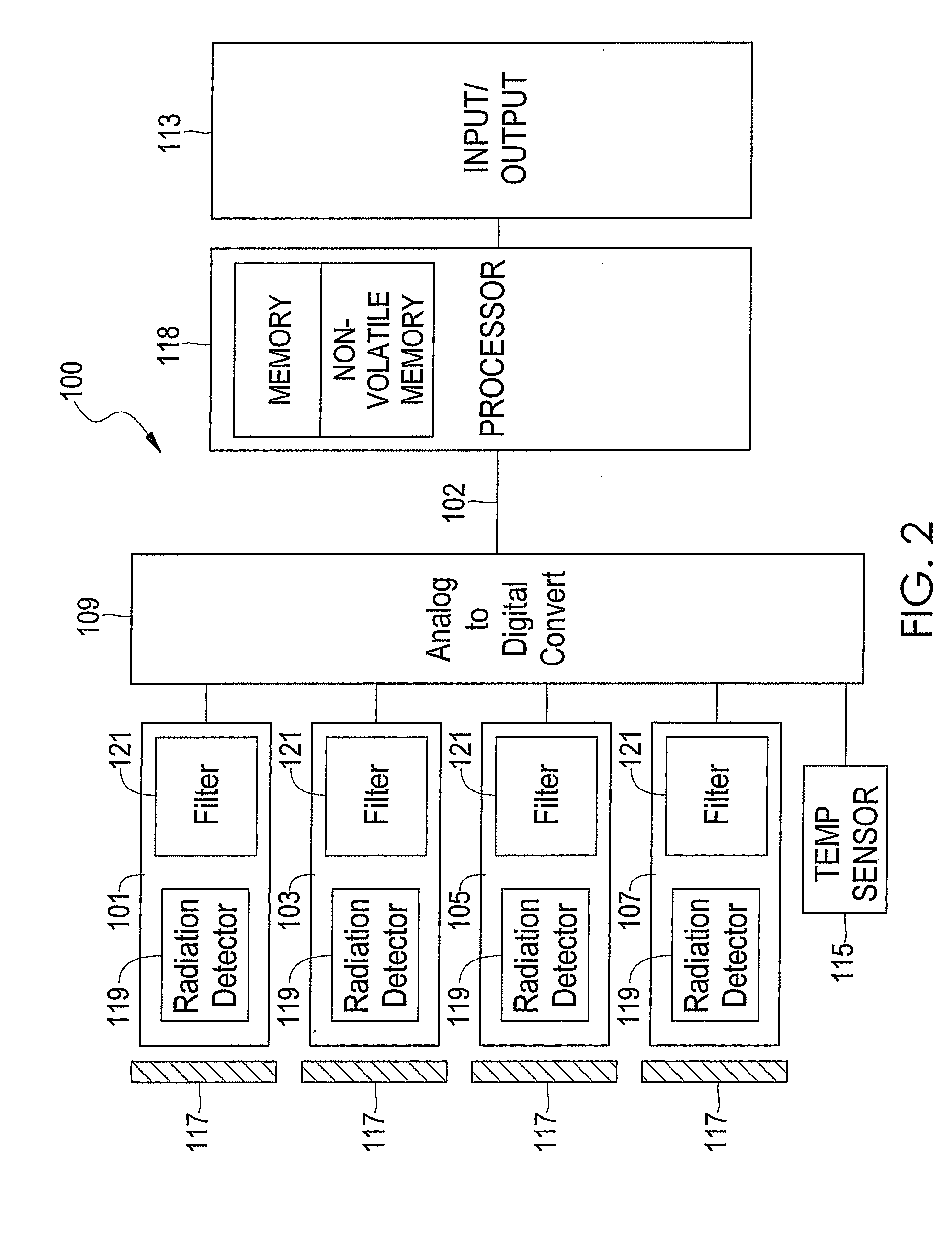Optically Redundant Fire Detector for False Alarm Rejection
- Summary
- Abstract
- Description
- Claims
- Application Information
AI Technical Summary
Benefits of technology
Problems solved by technology
Method used
Image
Examples
examples
[0025]A fire detection system having an operationally redundant flame sensor is described where the redundant flame sensor is structurally different from but substantially similar in performance to the flame sensor it mimics. In particular, the fire detection system includes three optical flame sensors. One of these sensors is chosen to be mimicked by a fourth optical flame sensor. In theory, any one of the three flame sensors could be chosen to be mimicked. However, it is preferred that the flame sensor that, in general, has the highest signal to noise ratio is mimicked. This flame sensor can be mimicked using various approaches that are functionally different and then implementing some form of compensation to make the operationally redundant flame sensor operate in a substantially similar fashion to the flame sensor chosen for mimicry.
[0026]In this manner, a Geiger-Mueller sensor and a UV-enhanced Silicon sensor, or a Lead-Selenide sensor and a thermopile sensor could be made oper...
PUM
 Login to View More
Login to View More Abstract
Description
Claims
Application Information
 Login to View More
Login to View More - R&D
- Intellectual Property
- Life Sciences
- Materials
- Tech Scout
- Unparalleled Data Quality
- Higher Quality Content
- 60% Fewer Hallucinations
Browse by: Latest US Patents, China's latest patents, Technical Efficacy Thesaurus, Application Domain, Technology Topic, Popular Technical Reports.
© 2025 PatSnap. All rights reserved.Legal|Privacy policy|Modern Slavery Act Transparency Statement|Sitemap|About US| Contact US: help@patsnap.com



